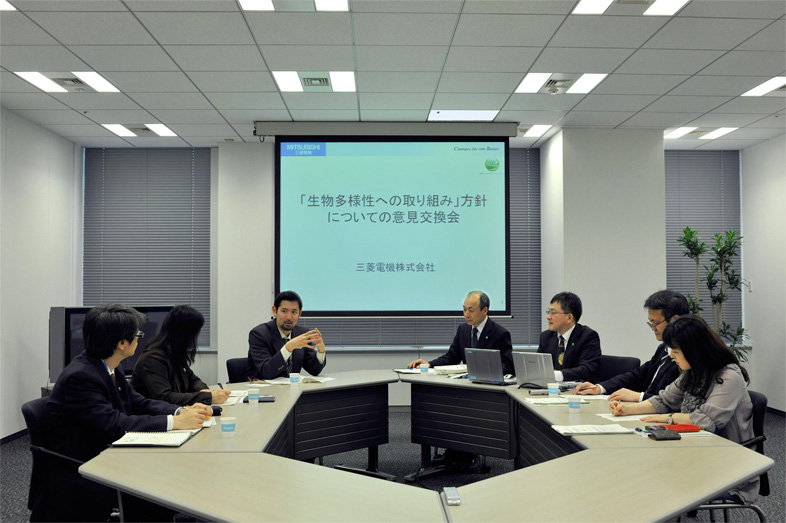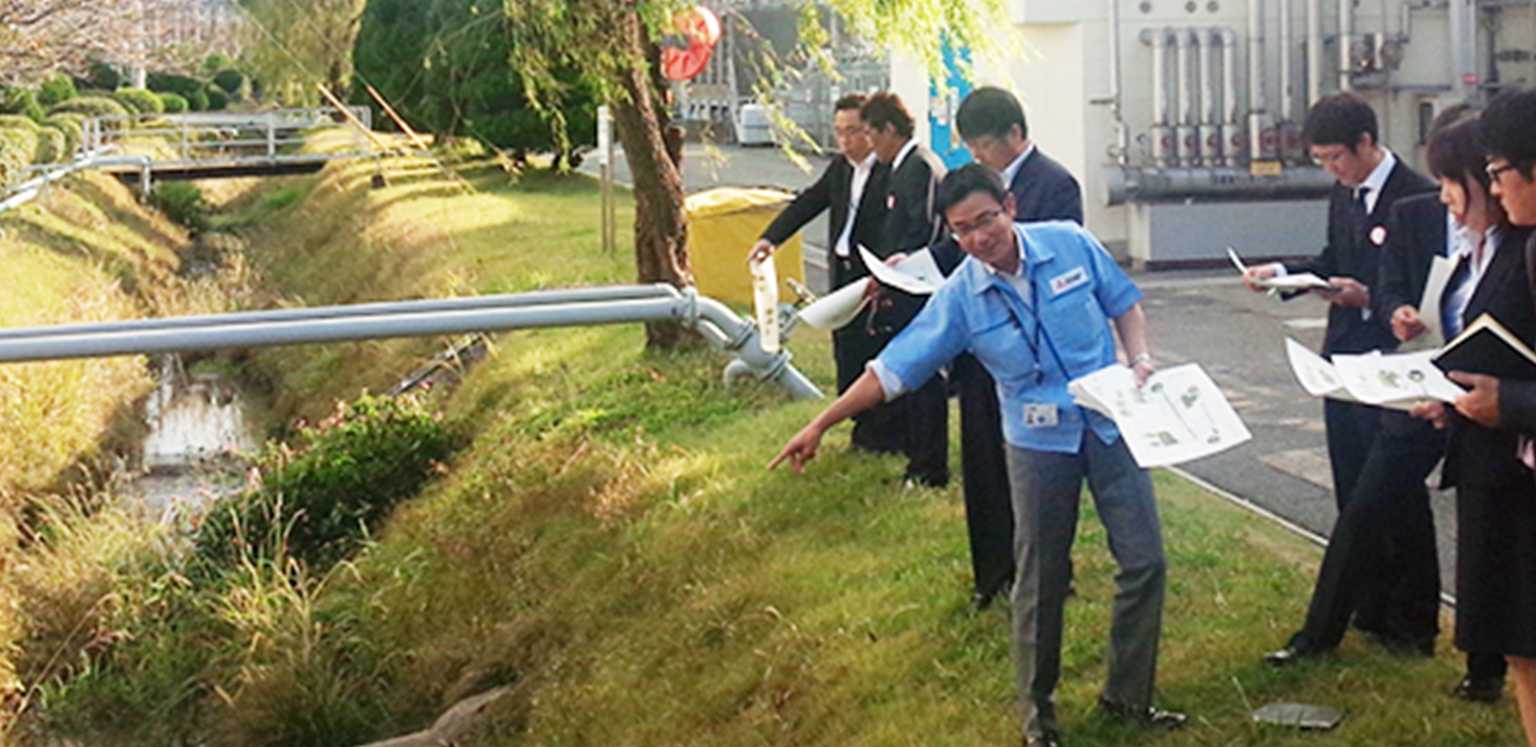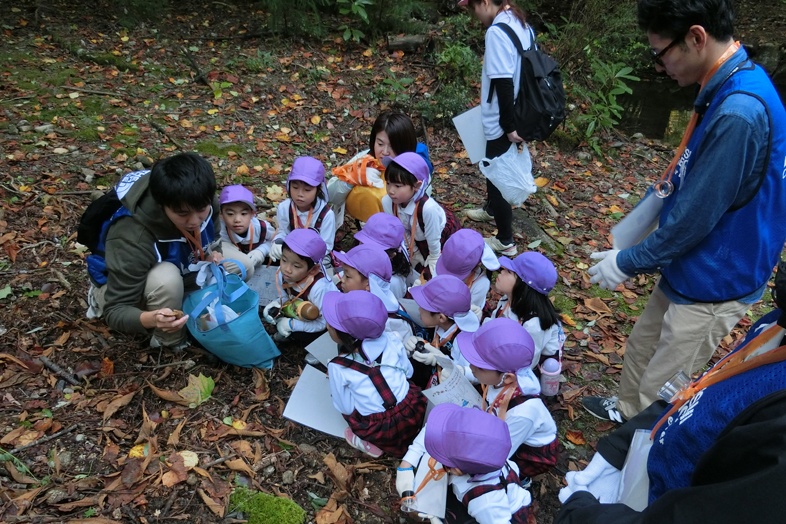Creating a Society in Tune with Nature
Biodiversity action guidelines
The Mitsubishi Electric Group has established Biodiversity Action Guidelines, based on our strong desire to protect the natural environment and realize a sustainable society through fostering environmental awareness among our employees. We're building understanding of the relationship between business activities and biodiversity.

Preserving biodiversity at business sites
The green space around many of our business sites is teeming with life, and we're doing what we can to preserve it in those spaces. Learn about our cooperative research, and dialogues with local experts.
- Preserving biodiversity at business sites
- * Please refer to the Japanese page for more information

Mitsubishi Electric outdoor classroom
The Outdoor Classroom is our initiative to encourage employees, their families, and local communities, to get close to nature, learn about ecology (relationships among living creatures) and develop environmental awareness.
